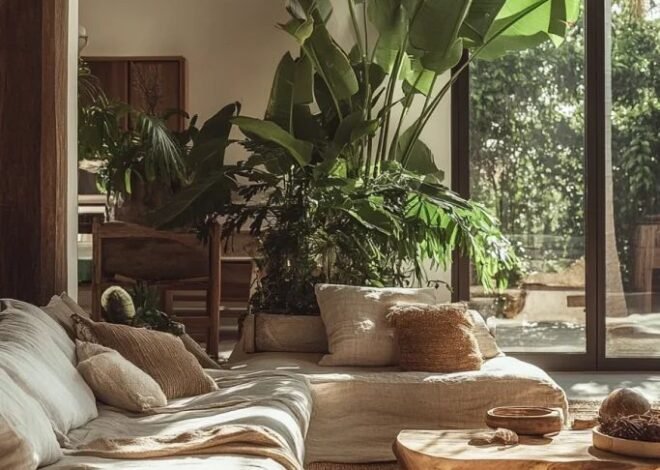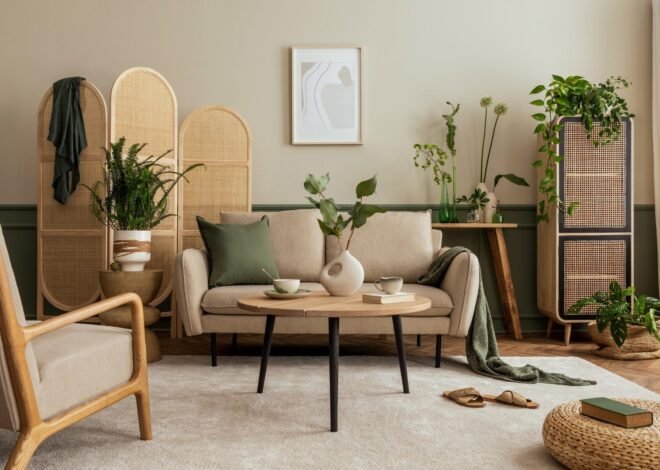
Creating a Home That Feels Like You: Thoughtful Approaches to Modern Decorating
A home is more than walls and furniture. It is a reflection of personality, a place that holds daily rituals, and a backdrop for life’s memories. Yet when it comes to decorating, many people get stuck between following trends and creating a space that feels personal.
The truth is, good home design is not just about beauty. It’s about functionality, comfort, and emotional connection. A well-decorated home supports the way you live, making everyday moments smoother and more enjoyable.
Begin With Purpose
Before picking paint colors or buying furniture, take a moment to think about how each room should function. A kitchen that doubles as a family gathering space will have different needs than one designed purely for cooking.
Ask yourself:
-
How do I spend most of my time at home?
-
Who uses this space, and what do they need from it?
-
What feeling do I want the room to create?
This purpose-driven approach helps avoid costly mistakes and ensures that the final design serves both style and practicality.
The Role of Color in Atmosphere
Color is one of the most powerful tools in interior design, influencing mood and energy. Warm tones like terracotta, mustard, and deep red create a cozy, inviting feel. Cool shades — blues, greens, and soft greys — bring calm and focus.
Neutral palettes remain popular for their versatility, but adding subtle accents through cushions, rugs, or artwork prevents a room from feeling flat. If you’re hesitant about bold colors, experiment with them in smaller decor pieces before committing to large areas like walls.
Layering Textures for Depth
A room can have beautiful furniture yet still feel incomplete if it lacks texture. Combining different materials adds richness and depth. Consider pairing:
-
Smooth leather with woven fabrics
-
Shiny metals with natural wood
-
Soft wool rugs with crisp linen curtains
Even within a single color palette, texture prevents monotony and makes a space more inviting to the senses.
Lighting: The Silent Mood Setter
Lighting affects not only visibility but also the overall mood of a space. A layered lighting plan combines three types:
-
Ambient lighting: General illumination, often from ceiling fixtures or recessed lights.
-
Task lighting: Focused light for specific activities, like reading or cooking.
-
Accent lighting: Highlights architectural features or art, creating visual interest.
Dimmer switches allow flexibility, while warm-toned bulbs make spaces feel more comfortable in the evening.
The Art of Furniture Placement
Furniture arrangement can dramatically change a room’s flow. Instead of pushing everything against the walls, consider creating zones for conversation, work, or relaxation.
In living rooms, grouping seating closer together fosters connection. In bedrooms, placing the bed as the focal point and arranging storage to keep pathways clear enhances both function and appearance.
Don’t forget scale — oversized furniture can overwhelm small spaces, while too-small pieces can make a large room feel sparse.
Bringing Nature Indoors
Plants are one of the simplest ways to add life to a home. They soften hard edges, purify the air, and create a sense of calm.
Low-maintenance options like snake plants, pothos, and ZZ plants suit busy lifestyles. Larger statement plants, such as fiddle-leaf figs or palms, can anchor a room’s design. Even in small apartments, a few well-placed plants on shelves or windowsills can make a big difference.
Natural elements don’t have to stop at greenery. Wood, stone, and woven fibers connect the indoors to the outdoors, grounding the space in organic beauty.
Displaying Personal Treasures
A home feels most alive when it contains traces of the people who live there. Displaying travel souvenirs, family heirlooms, or handmade art brings authenticity to decor.
Instead of scattering items randomly, group them thoughtfully. A gallery wall with framed photos, or a shelf arranged with books and ceramics, tells a story without feeling cluttered. Rotating displays seasonally keeps the space fresh and prevents overload.
Balancing Trends and Timelessness
Trends can inspire, but designing solely around them risks making a space feel dated quickly. Invest in timeless core pieces — a well-made sofa, a sturdy dining table — and use smaller, replaceable items like cushions, lamps, or rugs to experiment with current styles.
This approach allows flexibility without committing fully to something that may lose appeal in a year or two.
Organization as Decor
Clutter disrupts both beauty and function. Smart storage solutions keep essentials close at hand while maintaining a clean look. Baskets, decorative boxes, and built-in shelving can double as visual accents.
In open spaces, consider furniture with hidden storage, such as ottomans or benches. In smaller homes, vertical storage makes use of wall height without eating into floor space.
Scent and Sound: The Overlooked Elements
While sight dominates interior design discussions, scent and sound also shape the home experience. Subtle aromas from candles, essential oil diffusers, or fresh flowers can influence mood as much as color or lighting.
Similarly, acoustics matter. Soft furnishings absorb sound, preventing echo in larger rooms. Gentle background music or the natural sound of a water feature can add an extra layer of comfort.
Seasonal Refresh Without Major Overhauls
Refreshing a home doesn’t always require big renovations. Small seasonal updates — swapping throw blankets in lighter fabrics for summer, adding deeper colors and heavier textures for winter — keep spaces feeling in tune with the time of year.
Even rearranging furniture or changing a few key accessories can make a familiar space feel new.
Final Thoughts
Decorating a home is a personal journey, not a race to replicate a magazine spread. The most inviting spaces blend function, comfort, and personality. They evolve over time, shaped by the lives lived within them.
When you approach home decor with intention — choosing pieces that serve your needs, reflect your taste, and create the atmosphere you want — your home becomes more than a place to stay. It becomes a place to truly live.


